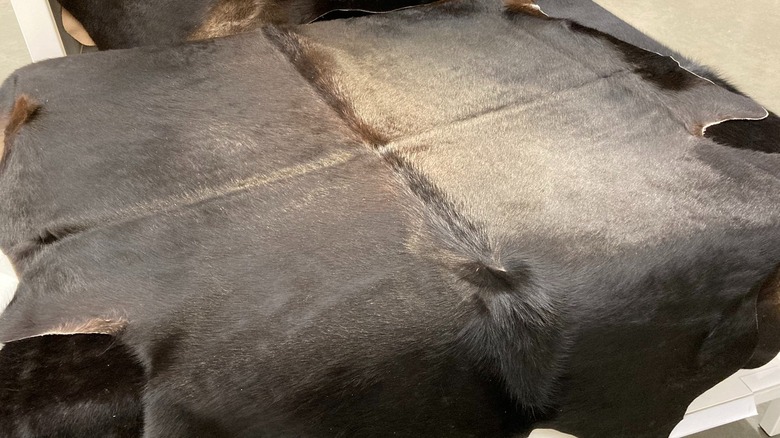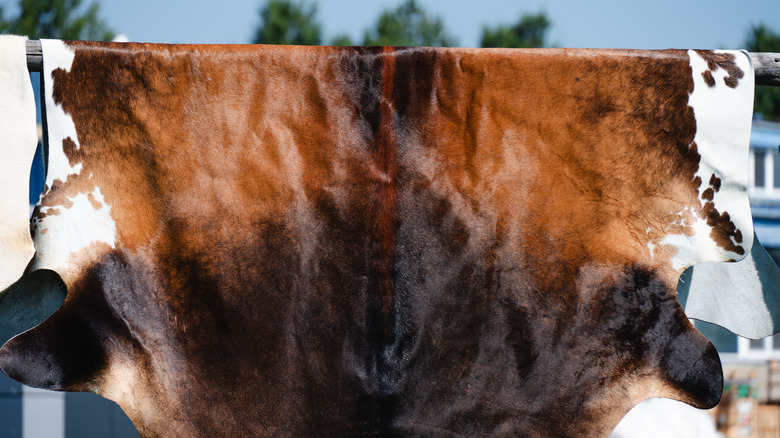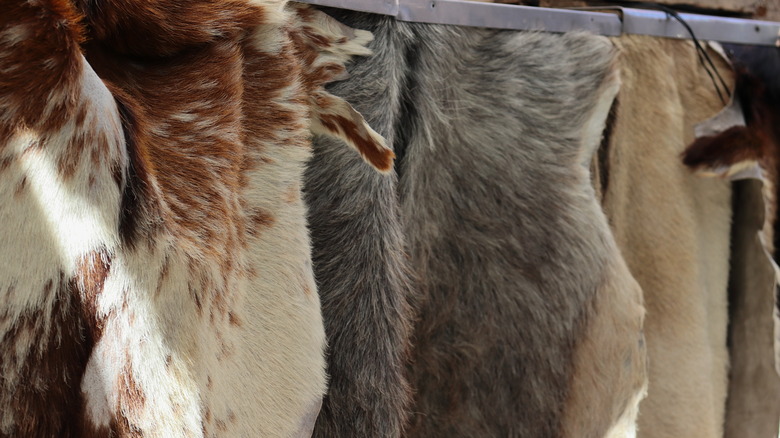What You Should Know About IKEA's Cowhide Rugs
Authentic cowhide rugs can be a stylish and practical addition to any space. Unlike those made from faux leather, they are hypoallergenic, highly durable, and easy to clean. They are unique enough to give you a one-of-a-kind piece due to their variations in color and pattern but also versatile enough to fit into a wide range of styles that go beyond rustic décor. IKEA offers authentic cowhide and sheepskin rugs to give its customers the option to add these unique pieces to their homes, but there have been ethical and moral concerns.
As the demand for a reduction in animal products continues to grow, more people are objecting to the manufacture and sale of these products by retailers. One big petition in 2018 called on IKEA to stop its processing and selling of animal products. While they still sell these rugs and materials, they make it a point to communicate that their use of them remains in line with sustainability efforts.
IKEA uses authentic cowhide
When dealing with a natural material like cowhide, it's important to know if it's real or fake, where it comes from, and how it is transformed into its final form as a décor piece. On every cowhide rug product page, IKEA gives some information about where the materials are sourced and why. "All leather and skins in our range are sourced from the food industry where they are by-products," says the IKEA website.
Cowhide as a material is produced during the manufacture and processing of beef, which is huge in the food industry. This means that IKEA takes a portion of the many "leftovers" and uses them to create something new. Because the demand for cow products like meat and milk remains so high, repurposing the cowhides that inevitably come out of that process into products that can live on is seen as a better alternative to throwing them into landfills.
More on their production process
While the U.S. has laws against primarily farming animals to make leather, it isn't always certain all over the world so it helps when retailers can disclose where they get their products from. This is probably why the uniform sections on all the product pages also clarify IKEA's commitment to animal welfare. "Since IKEA doesn't accept any form of cruelty to animals, we have traceability systems to verify that our requirements on animal welfare are being met," says the big-box retailer.
The treatment and preparation of the cowhide for household use is also an important part of the process to be knowledgeable about. From the tanning to the dyeing, chemicals are involved for various purposes like removing the hair, softening the hide, and preserving it, but they can be toxic which is why IKEA shares a bit about their treatment process. "Rest assured that our processing doesn't use chemicals or heavy metals that are harmful to humans or the environment... We want you to feel confident that you're not coming into contact with worrisome chemicals," they explain (via IKEA).


